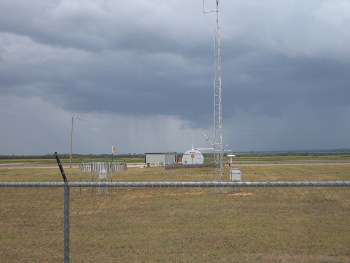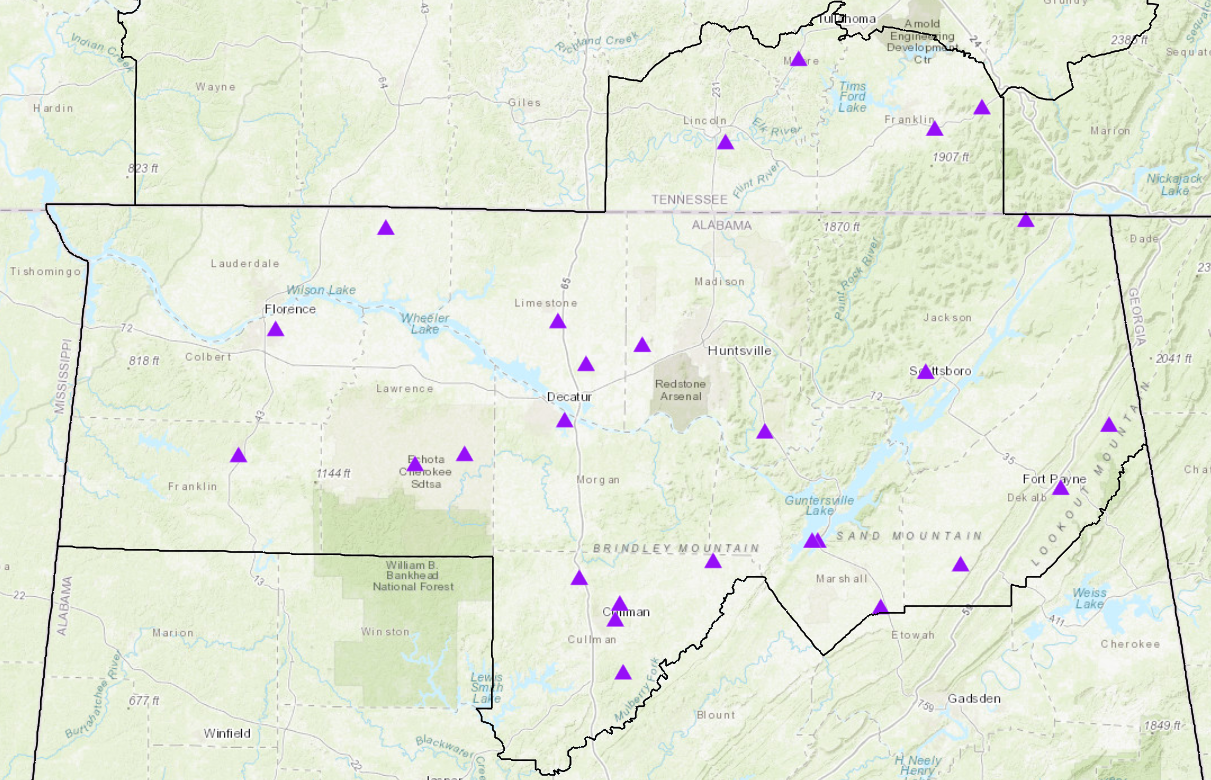|

Modernized COOP observation site at the Lawrence County Airport in Courtland, Alabama.
The temperature shelter is on the right beside the wind tower in the center of the picture.
A Geonor Rain Gauge complete with a wind shield can be seen on the far left portion of the picture.
|
|
What is the Cooperative Observer Program?
The Cooperative Observer Program (commonly called the "COOP" program) forms the backbone of temperature and precipitation (including snowfall) observations describing the United States climate. Approximately 11,400 volunteer weather observers across the nation, from private individuals to local agencies, provide this very important information. In addition to the volunteer observers, the network is supplemented by approximately 1000 Automated Surface Observing Systems (ASOS) which form the federal government surface weather and climate observing network for the United States.
|
|
Where are the COOP sites in the Huntsville area?
There are 24 cooperative observer sites in the current WFO Huntsville area of responsibility (click here for a map and list of sites). There is a long history of records keeping in the area. Valley Head, in Dekalb County, is the earliest COOP site in the area, having been established on June 1, 1885. The Huntsville office is also committed to expanding the program. Owens Crossroads (Madison County) and Anderson (Lauderdale County) have all been added since the office began operation in January 2003.

|
|
Several long-time COOP observers have received awards for their service, and in fact, three of them have received the most prestigious award for COOP observers.
|
|
What else can you tell me about the COOP program?
Founding fathers such as George Washington, Benjamin Franklin, and Thomas Jefferson all kept daily weather records. They were the forerunners of the modern COOP program.
Today, data from COOP sites have evolved into a source of extremely useful climatological information. Data from the network has been used in applications concerning climate change and variability, water management, drought assessment, environmental impact assessment, litigation, engineering and architectural design, energy consumption studies and models, and crop yield forecasts. Recently, high value applications of the data for use in energy industry and the Weather Risk Management Industry have evolved. Many of these applications require both historical climate data and timely access to current observations.
More information is available at the national NWS COOP website.
|
|
How do I get past data from the COOP observers?
Historical data for the period of record for all cooperative observer sites are available at the National Climatic Data Center in Asheville, North Carolina. This office may also be contacted by telephone at 828-271-4800.
Preliminary monthly precipitation and temperature data for current and recent years may be obtained from our local climate page. Just follow the links in the Monthly Rundowns Table, under the "COOP Precipitation" and "COOP Temperatures" sections.
Also, you can perform data queries for various climate statistics from some of our coop sites from the NOWData section of the climate page. From there you can do user-defined searches to find information about daily or monthly temperatures, precipitation, and snowfall, record highs and lows, and much, much more!
|
|
Can I become a part of the COOP program?
While not officially a part of the COOP program, the NWS in Huntsville does have a Backyard Observation Program that provides valuable information to forecasters here in Huntsville and across the region. You can also join the CoCoRAHS (Community Collaborative Rain, Hail, and Snow) Network to report precipitation.
|